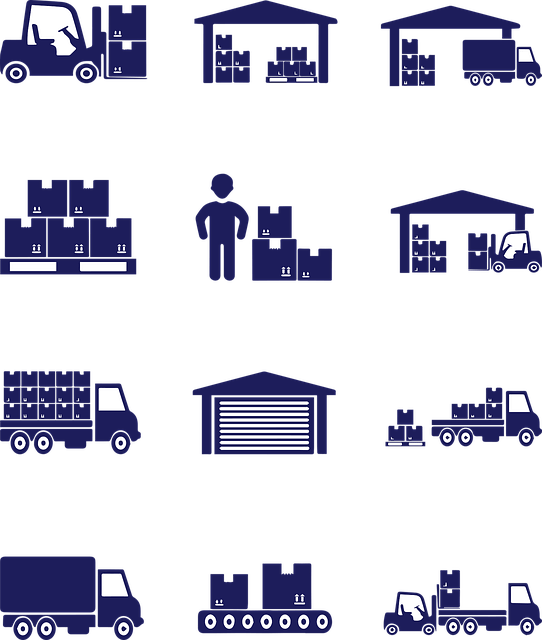Warehouses generate a lot of data. Data transformation plays a critical role in helping warehouses operate at maximum efficiency to meet customer demands and maintain profitability.Data transformation plays an important role in transforming raw data into actionable insights. By utilising data transformation practices businesses are able to optimise warehouse layout, stock levels and picking routes to minimise costs and enhance productivity.
Table of Contents
What is Data Transformation?

Data transformation refers to the process of cleaning, converting and manipulating raw data into a format suitable for analysis and use. Data transformation also includes normalising, aggregating and encoding data to ensure that data is consistent, accurate and usable. Data transformation brings data together and helps in moving and storing it. Data transformation allows businesses to combine different data sources,improve the data quality and move data to new systems. It empowers businesses and allows them to make data driven decisions and predictions.
➨ Optimising warehouse layout
An efficient operation calls for a well-filed warehouse. A disorderly layout increases travel time, the amount of traffic jams and inefficencies. Optimal layout of the warehouse by Data Transformation
a) Analysing historical data
To predict product demand and movement,historical order & inventory data massaging is done.assertj identity trends Product Locality – Where products are historically moved the most: By looking at historical product locations and movement frequencies, you can find that items tend to get pickled in a specific area more than anywhere else. From the data we are able to know how far products will need to travel and efficient ways of rearranging them. For instance the related to high in demand items, getting frequently ordered together products are near packaging and shipping area.
b) Heat map
The location and movement data is turned into visualization heatmaps. Heat Maps present the Warehouse usage area in most frequented locations. These maps tell us how products and aisles should be rearranged to minimize travel distances and congestion. They are tools to give you a visual sense of product activity in the warehouse so that it is easy for one to identify where things bottleneck and what stations go underutilized. These insights are utilized for the remapping of warehouse storage layout which in turn decreases travel time and enhances workflow.
c) Simulation and modelling
This data transformation lets them generate simulations and start testing models based on various layout scenarios. Warehouses study how different layouts affect picking times and efficiency, to then make informed decisions based on the data they obtain. Simulations help predict what effect particular ways of arranging a warehouse will have on operations. This data is then used by warehouses to try multiple layout configurations and bring an optimal configuration between efficiency and cost at a different level.
d) Zoning
This is an excellent exercise for identifying the best zones by Product Category, considering their characteristics and movement patterns… They categorize the raw product data based on dimensions, weight and type of demand. This characteristic contributes towards smart zoning inside the warehouse. Grouping like items enhances access and simplifies the picking process. Warehouses reduce the time and effort that is spent on picking orders by zoning the products accordingly and making them more accessible.

➨ Maintaining stock levels
Maintaining optimal stock is how businesses can cope with supply and demand. If too much stock is maintained, it leads to high holding costs. If too little stock is maintained, then stockouts and lost sales happen. Both result to a negative impact on a business’ bottom line, hence businesses need to learn how to maintain optimal stocks. This is done through data transformation by:
a) Demand forecasting
Transformed sales data, through predictive analysis, can also facilitate a business in predicting future demand. It is performed from the analysis of historical sales data and from the identification of trends. Such types of insights guide the businesses on their inventory decisions, telling them how much stock they should keep in order to avoid overstocking and understocking.
b) Inventory turnover analysis
Transform inventory data to Ascertain turn over rates for warehouses: Turnover rate allows us an insight on the items which are moving slow & fast. This data guides decisions regarding when and how much to reorder, helping to minimize surplus inventory and free up storage space. It is a measure of how quickly product will be sold and replaced, known as inventory turnover analysis. Warehouses adapt their ordering process, by turning this data into actionable insights so they hold the right amount of stock and minimize obsolescence.
c) Safety stock optimisation
It helps to measure variability in demand and lead times which makes the decision for determining both – safety levels & stock level optimal. These safety stocks provides shielding from demand variability as well as supply disruptions. Warehouses use Demand variability and Lead time data to transform how safety level stocks are calculated. This helps business to maintain a buffer in order not to have stockouts and unnecessary carry costs.
d) Reorder point calculation
Transforming historical sales data and lead time data to calculate reorder points correctly. It guarantees ordering new stock when it will be needed, to fill the inventory exactly with no excess of stock or understock in this way. Reorder Points: This quantity is the stock level at which new inventory must be ordered so you do not run out. Based on an analysis of previous sales data and supplier lead times, the warehouses determine when to reorder down to the day in order to avoid carrying too much or too little stock.

➨ Streamlining pickup routes
Efficient picking routes are important for reducing order fulfilment times and labour costs. Data transformation optimises picking routes through:
a) Order batching
Order data is transformed to identify similarities in picking lists that enable order batching. Batched orders allow pickers to get several items in a single trip by minimizing time taken in travel, increasing efficiency. The summing up of orders that have similar items into a single picking trip is called Order Batching. This reduces the numbers of trips required to be made by a picker and optimizes their routes. Data transformation helps identify which orders are to be batched together based on item locations and order deadlines.
b) Path optimization algorithms
The data transformation facilitates path-optimization algorithms, which are used to help calculate the shortest and most efficient routes for pickers. These algorithms factor in the layout of warehouse, product locations and current traffic within a warehouse. Moreover, these algorithms are designed to consider the locations of products in a warehouse and priorities for order fulfilment – operating with time defined windows while respecting concurrent traffic within the facility.
c) Dynamic slotting
The transformation of real-time inventory data allows dynamic slotting; frequently picked items are moved closer to the picking stations, which reduces the distance traveled, therefore speedy picking. In the dynamic slotting process, product locations are mapped and remapped continuously according to real-time data on the frequency of orders and picking patterns of products. Thus, by keeping high demand products close to the picking station, the warehouses save much time and effort in picking.
d) Labour management
Labour management: Determine who to give the picking tasks based on their skills and performance. Data transformation makes it clear who the best workers are at certain tasks, so high-priority orders go to the fastest pickers. This guarantees the fastest pickers work on your top-priority or intricate orders, soaring overall efficiency.
Data transformation are the best to using for optimizing warehouse layout, stock levels and picking routes. Warehouses play a vital role in streamlining operations by converting raw data into actionable insights to drive efficiency, lower costs and improve customer satisfaction. By analyzing historical data, creating heat maps or running simulations and implementing dynamic slotting; Warehouses experience operational improvement as well. Using demand forecasting, inventory turnover analysis safety stock optimization and reorder point calculations they keep the right amount of product to also optimize picking routes.

How does HIMCOS help ?
Himcos provides data transformation services. Our experts improve performance, reduce costs, enhance security and foster innovation, providing our clients with scalable, secure and high-performing applications. Through our data transformation services, we enable businesses to gain deeper insights into customer behaviour and preferences, driving better decision-making and growth.



